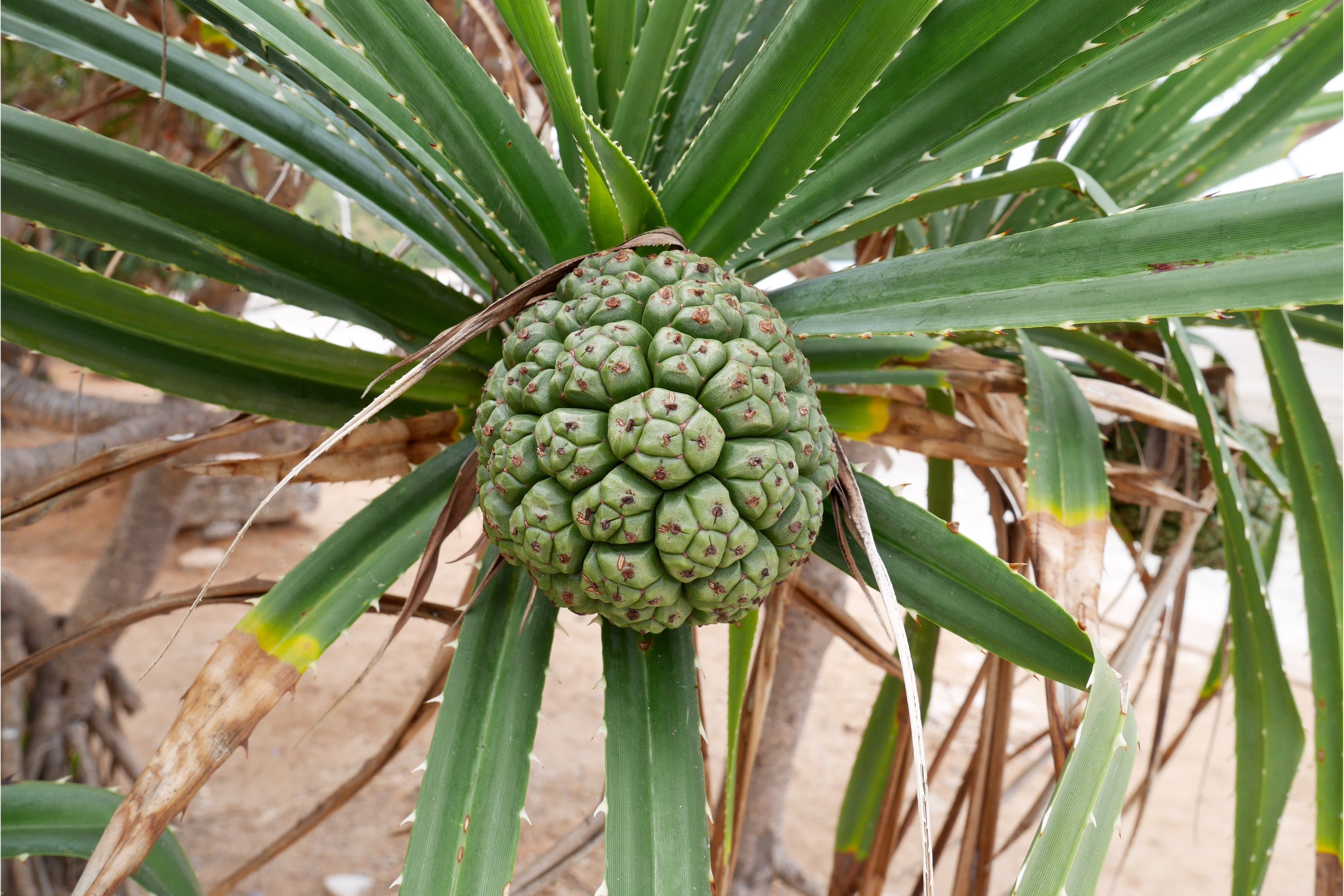Tahitian screwpine
(Pandanus tectorius)

Description
Pandanus tectorius is a species of Pandanus (screwpine) that is native to Malesia, eastern Australia, and the Pacific Islands. It grows in the coastal lowlands typically near the edge of the ocean. Common names in English include thatch screwpine,Tahitian screwpine, hala tree(pū hala in Hawaiian)and pandanus. The edible fruit is sometimes known as hala fruit. P. tectorius is a small tree that grows upright to reach 4–14 m (13–46 ft) in height. The single trunk is slender with brown ringed bark. It is spiny, grows to 4.5–11 m (15–35 ft) in width, and forks at a height of 4–8 metres (13–26 ft).It is supported by aerial roots (prop roots) that firmly anchors the tree to the ground.Roots sometimes grow along the branch, and they grow at wide angles in proportion to the trunk. Pandanus tectorius is dioecious, meaning male and female flowers are borne on separate trees, with very different male and female flowers. Male flowers, known as racemes, are small, fragrant, and short-lived, lasting only a single day. The flowers are grouped in 3 and gathered in large clusters surrounded by big, white bracts. these clusters are about 1 ft in length and are fragrant. Female flowers resemble pineapples. In Hawaiʻi the male flower is called hīnano and the bracts are used for making very fine mats (moena hīnano' or ʻahu hīnano). The female P. tectorius trees produce a segmented, large fruit. Although not closely related, the fruit resembles a pineapple.The fruit of P. tectorius is either ovoid, ellipsoid, subglobose or globose with a diameter of 4–20 cm (1.6–7.9 in) and a length of 8–30 cm (3.1–11.8 in).The fruit is made up of 38–200 wedge-like phalanges, often referred to as keys or carpels, which have an outer fibrous husk and are 8 inches in length.There are roughly 40 to 80 keys in each fruit and the color of the fruit can be yellow, orange, or red with a green top. Phalanges contain two seeds on average, with a maximum of eight reported. The phalanges are buoyant, and the seeds within them can remain viable for many months while being transported by ocean currents.
Taxonomic tree:







